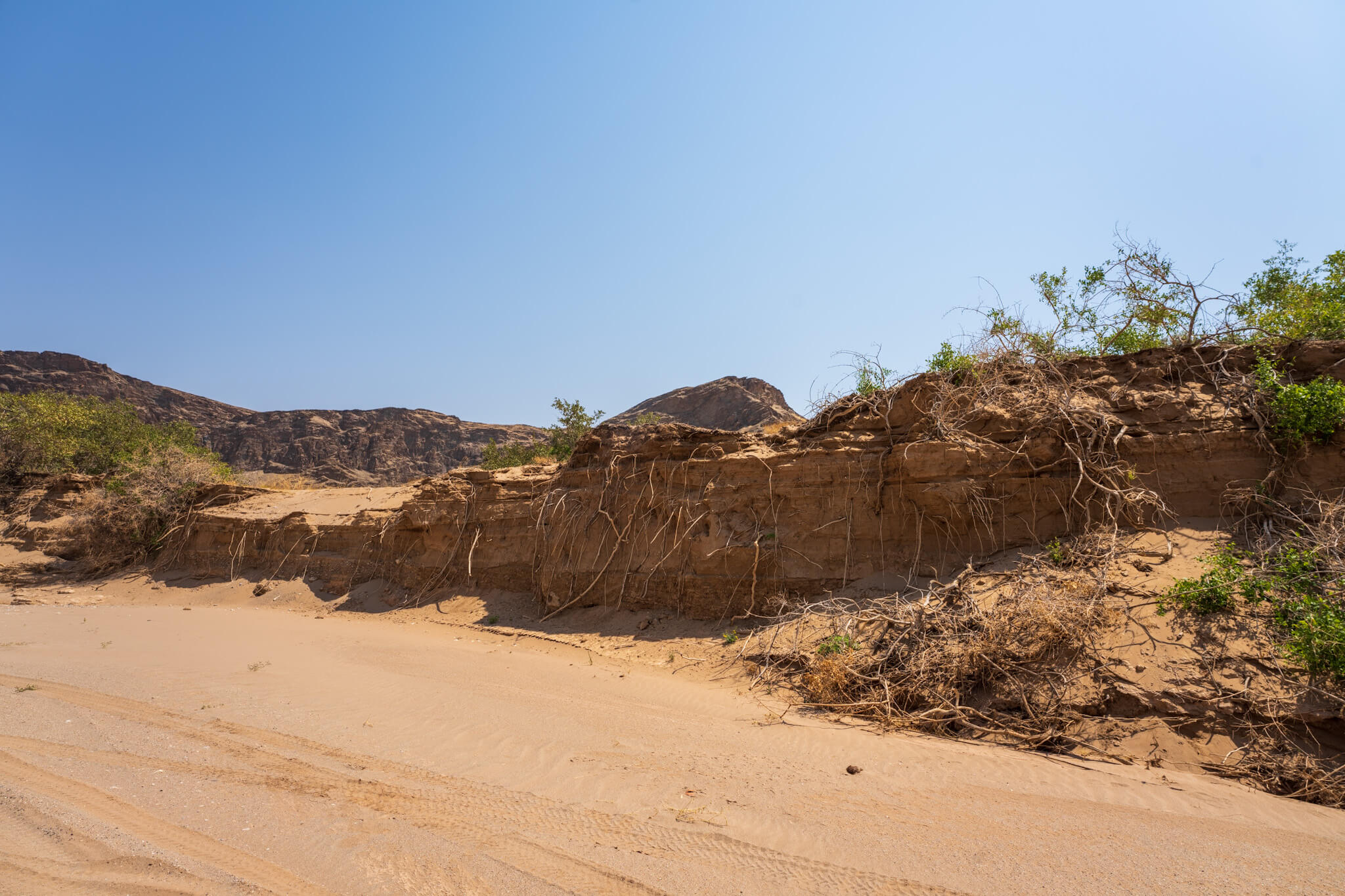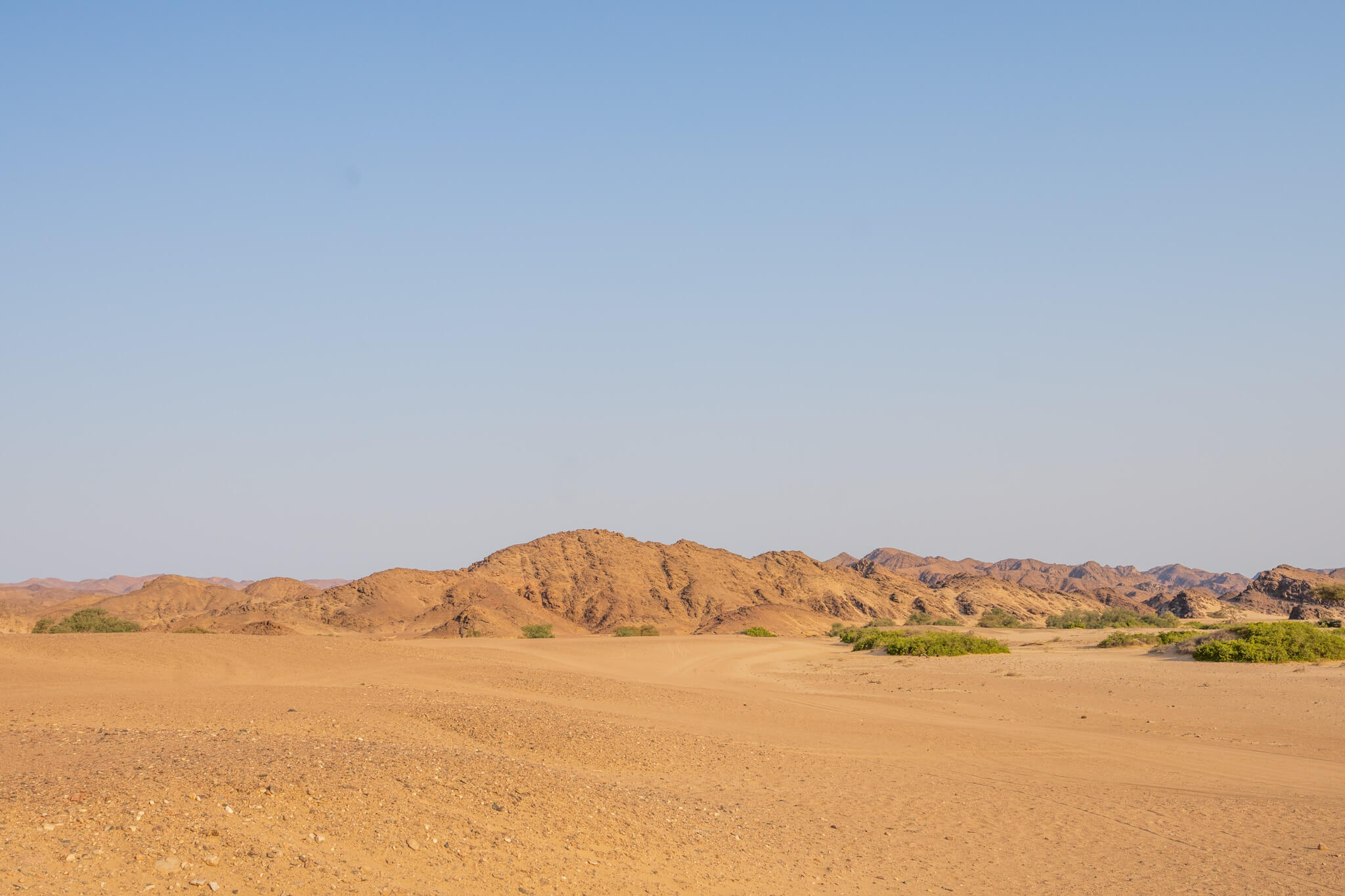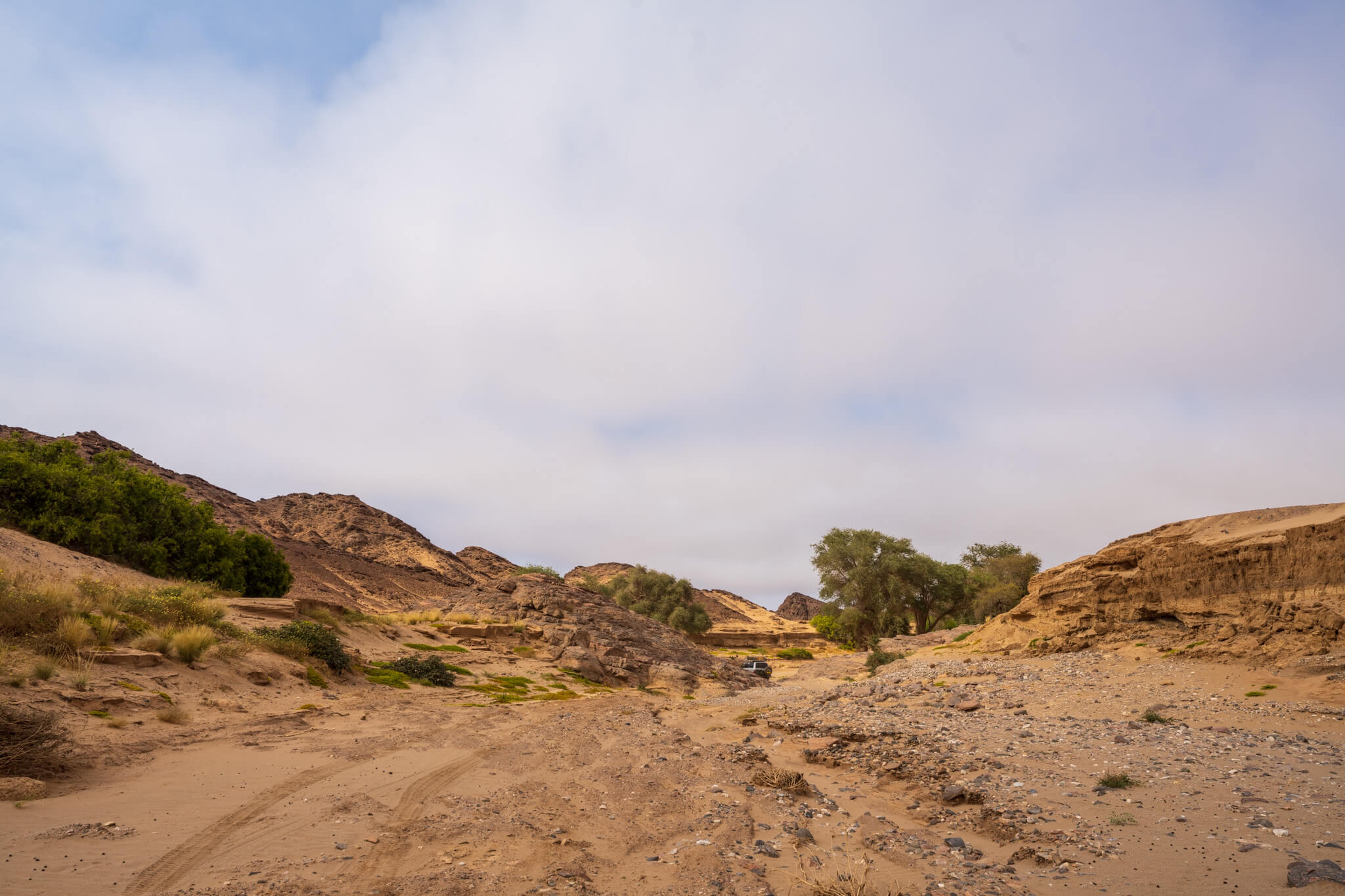After this prelude, all four of us were completely exhilarated and happy. Not only were we lucky enough to experience this rather barren part of the country in fresh colors, but we were in the right place at the right time to make contact with desert elephants. There are four riverbeds on our route where we could encounter desert elephants. The Ugab was the first. Two more opportunities immediately followed with the Aba Huab and the Hoanib. We left White Lady Lodge through the riverbed and followed small tracks through nowhere, off the official tracks, to continue our way towards Kaokoland. Our next stop was Madisa Camp. This camp, which is on the way to Twyfelfontein, is one that all four of us like very much and we have all been there several times.



We spend the night in the Aba Huab
Madisa Camp was well booked, so we were able to get the last campsite. We tried to plan the daily stages so that we do not exceed about 90-130 km distance. Madisa served us as a stopover and was accordingly unspectacular. The focus was on the next stage. After a short driving distance we crossed the riverbed of the Aba Huab. Instead of following the road further, we turned off and drove into the riverbed. After a good kilometer we orientated ourselves and looked for a shady spot. We wanted to spend the hot noon there and used one of several big trees for shade. All these big trees are also very popular with elephants. Everywhere their tracks testified to their regular presence. We cooked in the middle of the riverbed and estimated the chance of elephant visitation very low in the heat. After some relaxing hours and a good meal we left the riverbed to an adjacent hill to set up our sleeping place.






It hums
The evening passed without incident. Once again we enjoyed the opportunity to stand freely in the wilderness and were amazed by the spectacular surroundings. The earth is beautiful and we were grateful for these intense experiences. We went to sleep early and around 12:30 a.m. Sonja and Guido woke up at the same time because we heard a deep humming sound. That had to be elephants – the sound is familiar to us and makes us feel happy in our stomachs. The next morning we were sitting comfortably having coffee while Geli, armed with her camera, was inspecting the riverbed. Suddenly Geli came running out of breath, had an excited face as if she had seen ghosts and shouted: “Elephants”!


Elephants in the riverbed!
Less than two minutes later, they slowly came around the corner. Elephant after elephant showed themselves and came around the dune. Cows with calves, teenagers and even some bulls walked by comfortably walking and feeding. Some stopped under trees, already enjoying the morning shade. We squatted on the ledge and watched the gray giants contentedly. What lucky people we are! In the second possible riverbed we saw desert elephants again and then immediately a whole herd. We watched them while they followed the river bed around the next bend and stayed behind lost in thought. So the tour could go on with pleasure.






We are in Kaokoland
Damaraland gave us very exciting days. We drove over official tracks to the veterinary fence near Palmwag and found ourselves in Kaokoland. In Palmwag we refueled to the brim again and made a stopover at Khowarib Lodge. Their campsite offers a few wonderful spots above the gorge. We booked ourselves in there and relaxed the rest of the day with a view of the gorge and the Hoanib, which is flowing in this part of the river. We did some more shopping for staples like potatoes, onions and tomatoes the following day in Sesfontein, where we went to the gas station and filled up the 14 liters we had consumed. It sounds crazy for European standards but in this region every liter of diesel is important.
Through the Hoanib
From Sesfontein we followed the dirt road to Puros for just under 10 km and left it in the direction of Hoanib. We drove the following part separately with a clear time gap, because this region was characterized by powder dust. If you drive into such a ground, it dusts like powdered sugar and it takes a very long time until the dust has settled. The crossing was flawless and after a short time we reached the gate to the Palmwag concession area. In order to be allowed to drive in the Hoanib valley, a fee is charged here. While Uwe and Geli already knew this area, the crossing was new territory for Sonja and Guido. The riverbed of the Hoanib was green everywhere and characterized by partly extreme deep sand. Also the differences in altitude are partly very remarkable. In some places, the edges of the cliffs are very massive.








Abundance in the riverbed
While we were busy choosing the right tracks in the deep sand, suddenly behind a bend, there appeared an elephant. We drove past and looked for an area that was provided with stones to stop there and turn the cars. We approached the elephant on foot, as the cars would get stuck in the deep sand, and observed a contented, well-adjusted elephant moving along the edge of the riverbed, aware of us but completely ignoring us. We do not show the format-filling shots with the long telephoto lens here, because they are too normal. We find this shot with 50mm focal length particularly successful, as it highlights the different habitat of the local elephants. This is what distinguishes these tough desert elephants from their relatives in the savannahs and national parks. The abundance that nature had in store for the valley dwellers here was extraordinary and pleased us greatly.

Giraffes at the end
The first time on this tour we finally saw giraffes. Shortly before the end of the approximately 70 km long section through the Hoanib, we saw a larger group right next to and in front of us in the bush. We enjoyed this sighting before heading off to find a place to sleep. At the end of the concession area we spent the night sheltered from the wind and let this exciting day come to an end. Luck was with us again and in the third river we had the immense luck to see (one) elephant. Would we also succeed in the fourth river, the Hoarusib? We did not know at this point and the answer to the question had to wait a little longer, because in the next few days other regions and experiences were on the agenda.






